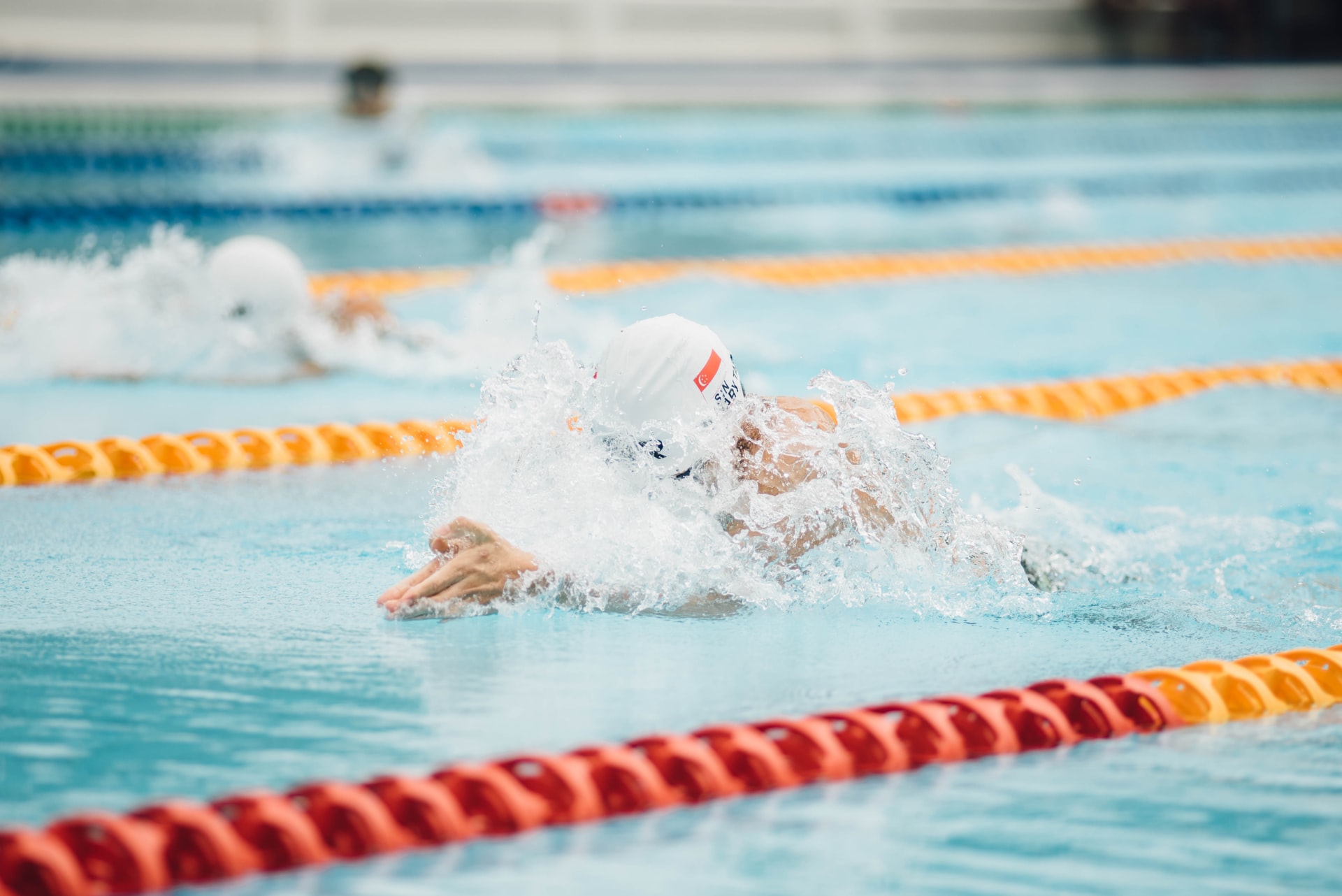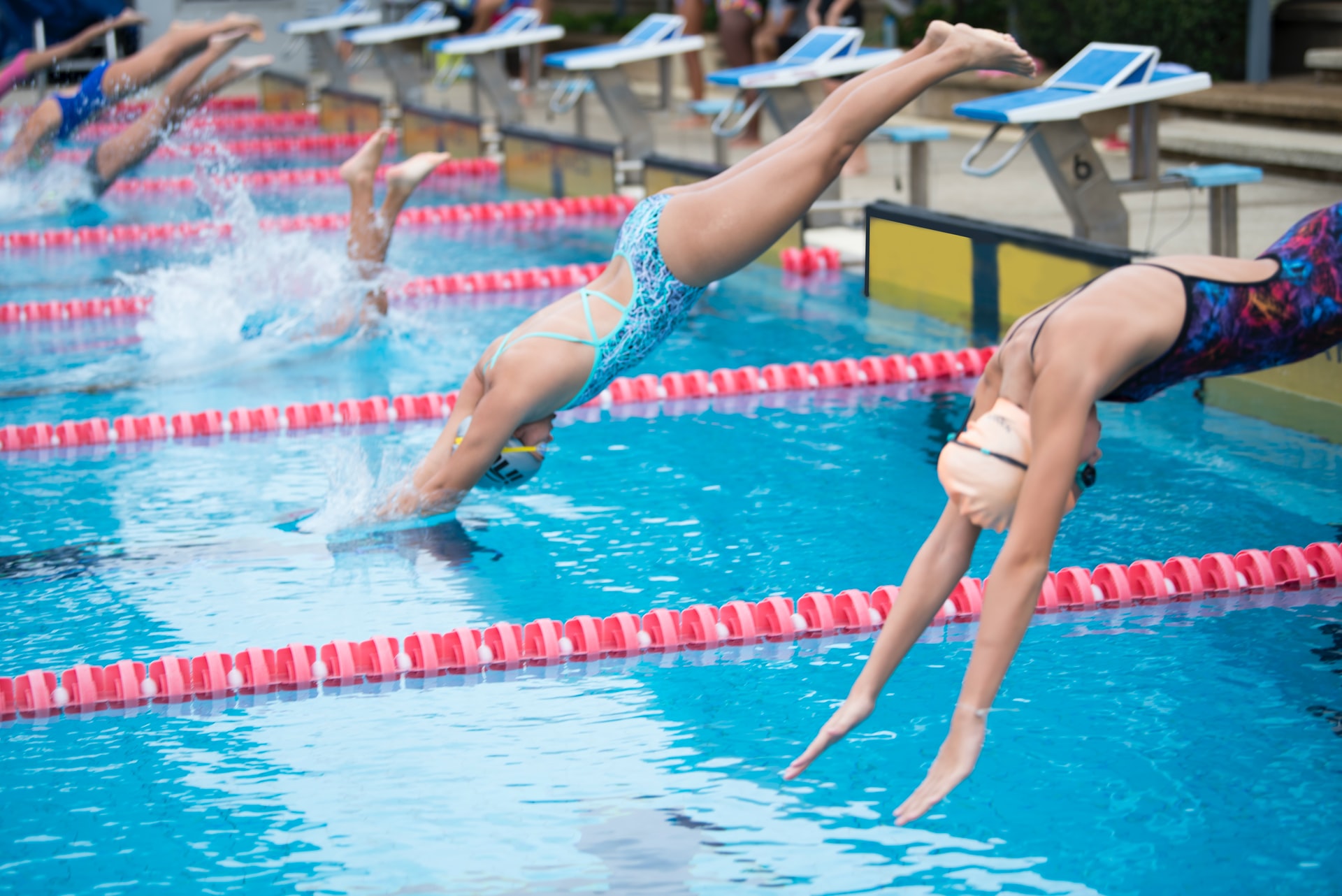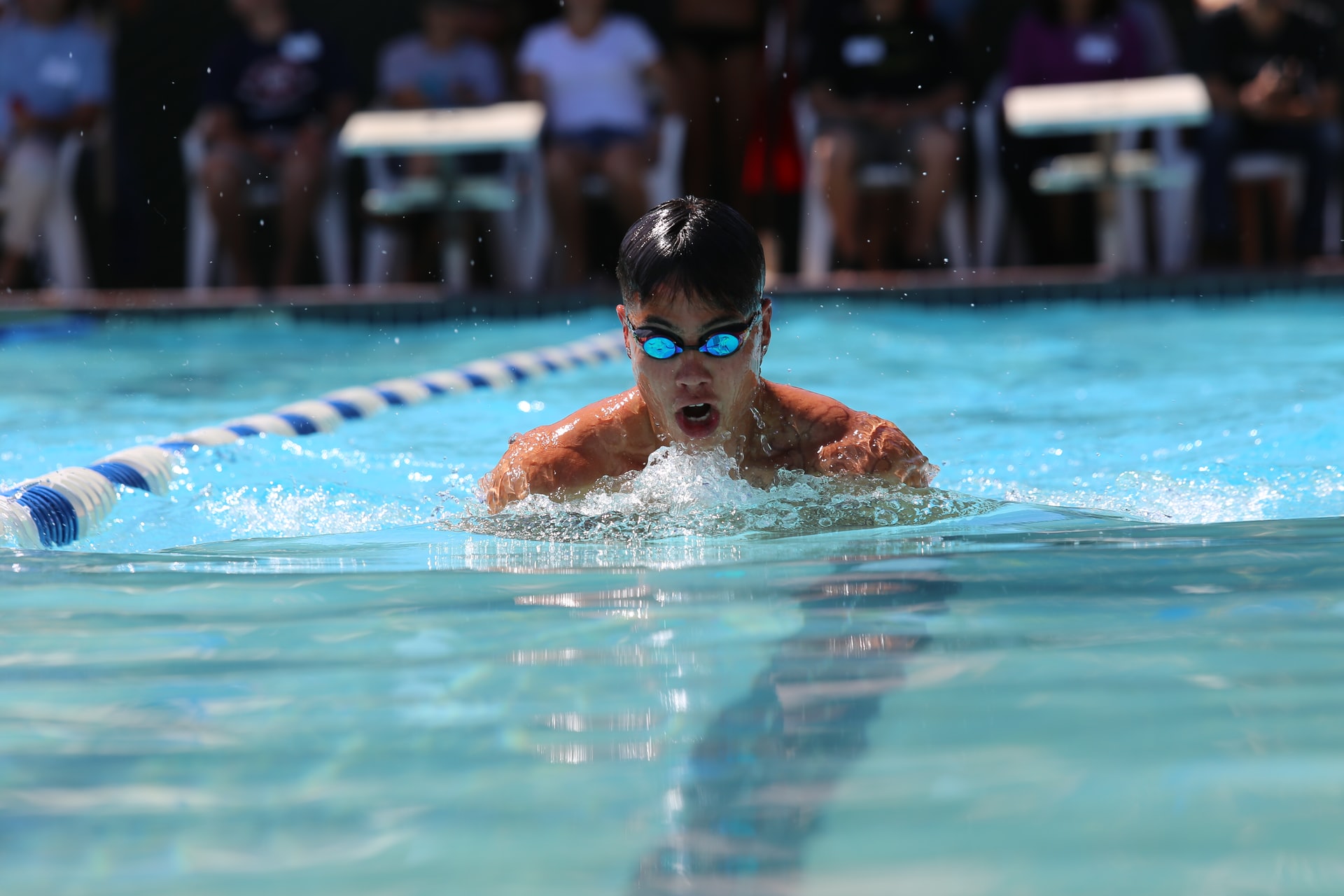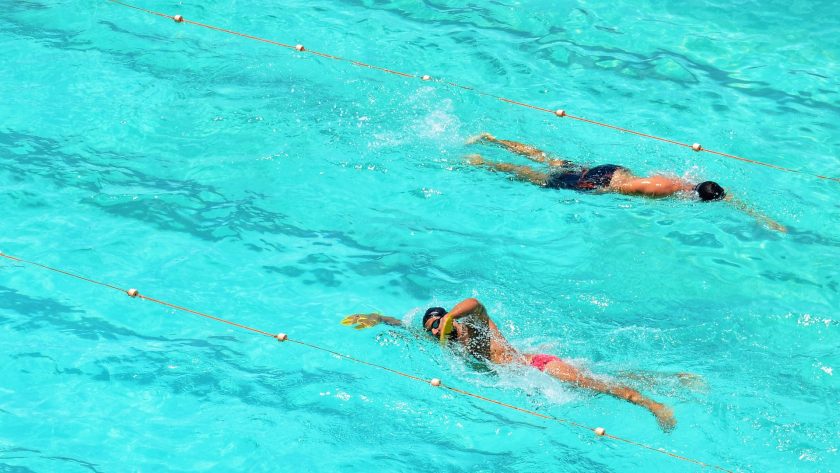When swimmers do well in them, fast swimming pools are deemed to be “quick.” Although it’s kind of an intangible amenity, competitive swimmers are aware of it and value it. A swimming pool’s potential for revenue is increased if it has a reputation for being swift.
Each pool has a reputation.
In the realm of competition swimming and diving, there is one fundamental reality that should be stated right away: every competitive pool has a reputation. And that reputation can circulate via word of mouth more quickly than you might imagine. Swimmers are not always the same as people in that they tend to share bad news more quickly than positive. Swimmers are typically hard-working, competitive athletes who don’t complain much. If a pool isn’t so horrible that everyone is thinking the same thing, it’s considered weak to complain about it. Swimmers therefore tend to keep their opinions to themselves, even when a pool is subpar.
But also don’t anticipate them to swim their fastest times.
Swimmers may be physically and mentally slower if the air quality within the pool is poor. Who wants to spend their weekend in a filthy, unpleasant, and muggy swimming pool? Swimmers most certainly don’t, and neither do the swim meets’ coaches, lifeguards, volunteers, and parents. They spend hours upon hours there as well. Swimmers are less likely than parents and coaches to talk badly about a pool when they had a bad experience. Who can blame them, though?
In either case, swimmers frequently form their opinions of a natatorium before even entering the pool. They are already aware of it according to rumors.
The mere fact that swimmers themselves rarely voice complaints about the state of the pool does not imply that they are enjoying their time there. You can bet that swimmers won’t like competing there if they don’t like being there. They won’t race quickly if they don’t enjoy racing there. Unhappy swimmers, as you can imagine, do not contribute to a pool’s reputation as a “quick pool.” Swimming enthusiasts do.
 Possessing a “quick” reputation pays off
Possessing a “quick” reputation pays off
One of the greatest compliments a pool can receive is a reputation for being quick. It is also among the most profitable resources a pool may have. Swimmers are eager to attend. Their swimming instructors want their swimmers present. Parents of swimmers naturally want their children to compete there.
Whether it’s to make a specific “cut time” to qualify for a bigger meet, to stand out to college recruiters, to simply earn points and perform well, or for any other reason, everyone involved wants their swimmer(s) to swim the greatest times possible. In swimming, fractions of a second matter. A pool that is known for being quick will be in demand and gain a positive reputation.
Swimmers are typically extremely enthusiastic about a terrific pool, but they may be silent about a mediocre or subpar pool. An exciting feeling of anticipation to swim in such pure water is what draws swimmers to a great pool on an emotional level. Being able to compete in a stunning setting is a reward for the difficult sport of swimming.
The mere sight of a fantastic pool ready for a championship meet makes a swimmer’s heart race. They will swim quickly because cheerful, enthusiastic swimmers outperform unhappy ones in races. A few days before the US Olympic Trials in Omaha, we felt an adrenaline surge that we will never forget. The majority of the sportsmen and coaches were rendered speechless when first witnessing that pool.
This competitive atmosphere in the water is a well-earned reward for adults can learn to swim here and who have worked hard for years to earn a spot at a competition like the Olympic Trials. Nothing compares to that sensation.
Fast is a relative term.
Some claim that “quick swimmers” are needed in a fast pool, but we don’t agree. It’s less important that very skilled swimmers compete and show up. Hell, if that were the case, why do so many Olympic swimmers train in natatoriums that resemble prisons and dilapidated outdoor pools? Because Katie Ledecky walks up and defeats everyone else (even if she isn’t swimming well), it isn’t a “fast pool.” Instead, a fast pool is a venue where swimmers of all abilities can perform well for themselves. We’re referring to the typical age-group swimmer who records a personal best time or the swimmer who ultimately overcomes a challenge after putting in a lot of effort and failing for months or even years.
Fast pools represent a swimmer’s subjective experience, not the scoreboard’s.
How to create a quick pool
There are a few important design elements that genuinely influence how quickly swimmers can move in water, in addition to the psychological factors that encourage performance (excellent lighting, crystal clear water, fresh air quality). Let’s discuss a few of them.
Depth
This 50-meter pool has a very deep end and a 4-foot shallow end. However, the depth is uniform throughout all lanes, and even when there is a difference on the outside lanes (1 and 8), it is deep enough to be inconsequential.
The majority of competitive swimmers concur that swimming in deep water is faster, however there is a limit to how deep the water can go. It is subjective to determine how deep something is; it largely depends on the swimmer’s size. Although opinions differ, in our view, any depth greater than the swimmer’s height is sufficient. So although a 9-year-old could be quite comfortable in 4.5 feet of water, a 6’3″ college man would consider that to be extremely shallow for racing. The claim is that the swimmer will experience turbulence that will reflect off the floor. However, if the water is deep enough, there won’t be any discernible rebounding turbulence.
Below the “deep enough” depth, the pool floor’s shape is most important.
Significant lane depth differences can be viewed as unfair, even just mentally. It may be argued that the deeper lanes are unfairly given an advantage if lanes 1 and 2 are shallow while lanes 6, 7, and 8 are deep. The relationship between depth and contour is evident here since, regardless of the depth variations, the racing lanes should be equal or nearly identical. A fair depth change would have all lanes experiencing an equal number of depth changes, with divers entering the same depth. In this way, nobody benefits, whether they realize it or not.
Using the breaststroke as an example, breaststrokers dive in further than most other strokes because they have an underwater pull-out. In a shallow pool, a swimmer simply cannot dive as deep since the trajectory off the dive must be at a less-than-ideal angle. This slows down the pull-speed out’s and shortens it. This is why breaststrokers detest shallow pools.
Optimal Depth
If there are going to be big swimmers competing in the pool, the depth should be “deep enough” for them, and if there are going to be depth variations, they should happen equitably for all lanes.
A minimum depth of 2 meters must be maintained throughout an Olympic swimming pool, according to FINA, the world’s governing organization for swimming, and any modifications must be consistent across all lanes.
Water Quality System
When swimming quickly, water clarity is essential. Nobody enjoys swimming in a murky, disgusting pool. Excellent filtration and a secondary disinfection system are features of fast pools. A fast pool needs procedures in place to accommodate such a demand because warmup and cooldown periods at swim meets frequently involve a large number of people entering the water. We advise utilizing enzymes in place of chlorine since they can deal with non-living organics that swimmers add to the water. Water can become murky in a matter of hours without these devices in place. Water quality is a problem for multi-day swim meets in the same way that air quality is.
 Systems for Optimal Water Quality
Systems for Optimal Water Quality
Regenerative D.E. filtration, in our opinion, comes in first place, followed by a pressure sand filter that uses crushed glass as the media instead of sand. Ozone is the best secondary system for outdoor pools because it is unaffected by sunscreen. Both UV and Ozone are excellent for indoor pools, but Ozone has the advantage because it can eliminate chloramines’ forerunners. Finally, NSF-50 Certified enzymes make a significant difference in the clarity and feel of water by addressing bather waste, also known as nonliving organics.
Skimmers vs. Gutters
When it comes to a quick pool, gutters and skimmers really cannot be compared. Gutter pools should be used for competition. There is not enough surface oil and nonliving organic material collection in skimmer pools due to excessive turbulence. Perimeter overflow gutters may almost minimize rebounding turbulence from the walls and maintain the water level at that exact same level. Surface waves do not return to the gutter; instead, they merely overflow into it.
Some people might find this surprising because the flat-wall touchpad required by the FINA international standard actually produces more turbulence than an overflow gutter. The “gutter-hung” touch pads used in American swimming, including high school, USA Swimming, US Masters Swimming, and collegiate levels, are frequently submerged and allow water to readily pass over them and into the gutter or flow-through bulkhead. Internationally, however, the touchpad must extend all the way to the deck, leaving the swimmer with nothing to hold onto. See the following photo comparison.
Both swimming strokes are incredibly quick. Turbulence is not a problem when swimming to the wall since fast swimmers outpace their wake. Getting beneath the wake off a turn is the name of the game. As was previously noted, this leads us back to depth. Swimmers take longer to get out from under their own wake if the pool is too shallow, which slows them down.
Ideal Touch Pads and Gutter
The only gutter design that can withstand all waves is the ideal gutter design (unlike a simple scum gutter, or shallow trough). As long as it is securely fastened to the wall and has excellent grip, we have no strong feelings about employing a flat wall or a gutter-hung touch pad. Nobody enjoys having their hands or feet slip while turning.
Michael Phelps was among the best at what we mean when we say to “go under the wake”:
Markings and Tile
The majority of swimmers can see the tile line at the bottom clearly, even in a hazy pool. If not, the pool is still unsafe for swimming because it won’t be clear enough to see the main drain, which poses a risk of drowning. This is more about how well a swimmer can see the tile on the wall or T marking on the bulkhead than it is about whether or not they can see the tile on the bottom of the pool. The tile line on the bottom finishes with a T when a swimmer is racing into a wall or bulkhead, which is supposed to be a standard distance from the turn wall. The NCAA’s pool dimensions, for instance, include a five-foot distance between the T and the wall.
The international FINA standard, however, is 2.0 meters from T to the pool wall, therefore that distance is not necessarily the norm. There is a discrepancy of more than a foot and a half between two meters and six and a half inches. But from the swimmers’ perspective, the distance between the T and the wall is actually more of a problem. Depth counts. When the pool is 4.5 feet deep compared to 12 feet deep, a five foot distance seems substantially differently. Additionally, the turn wall is misleading and difficult to judge if the pool’s wall and floor are highly curved, as is the case with many shotcrete pools.
Ideal Markings and Tile
Tile lines can be perplexing if a pool can be turned in two directions that are perpendicular to one another. Make sure the dominant tile lines and the T are clearly highlighted in the primary racing setting. Bulkhead locations may find this puzzling, but at least make them distinct from the cross-lines (see photo below in the Lighting section). The ideal situation would be for the wall tile to be set deep enough that a swimmer could view the wall without having to lift their head. If the pool is shallower than 6 feet, we advise making the T on the wall at least that deep.
Lighting
Yes, excellent illumination mostly serves as a psychological perk that motivates swimmers to compete. But for clear visibility underwater, lighting is also essential. Swimmers may have a harder time determining where the floor meets the wall or where the bottom of the bulkhead starts if a pool has a lot of shadows or darker places. Poor illumination compels swimmers to lift their heads up in order to see where they are going, similar to the tiling and markings indicated in the preceding sentence. Even for a few moment, lifting your head causes you to lag behind.
Beginning Points
Starting blocks must be reliable and comfortable to hold. Brand is less important than consistency. Starting blocks from renowned brands that are loose and unreliable have been seen. Starting blocks are only as effective as the ground they are placed on (or bulkhead). A start becomes unsteady when a good block is improperly fixed in position because it will jiggle. Even if it only moves by half an inch, the swimmer will have wasted half an inch of effort. It counts in a sport where split seconds make the difference.
When diving, a young, little swimmer may not move a block at all, whereas a college swimmer who weighs 200 pounds or more may move the same block rather a bit (or older). Without a doubt, the most crucial component of the starting line is stability.
Around 2010, FINA adopted a starting block “wedge” that can be modified. Every major starting block manufacturer has their own variation of this wedge, which must adhere to specific measurements and angles. We might argue about the advantages and disadvantages of each kind of beginning block, but the focus of this post is on speed—specifically, how to create a quick pool. Start with a solid foundation, then consider how simple it will be to alter the wedge. It’s crucial for the athletes that some are simpler than others.
 Ideal launching points
Ideal launching points
Stability is key. Any swimmer will be able to get off to a strong start with this block if the biggest, strongest swimmers can’t move it even a millimeter. Simply make sure that it has adequate traction so that swimmers won’t slip on the block itself. Fortunately, anti-slip surfaces are already popular among beginning block makers.
Lane Markers
Only a small number of lane line manufacturers control the majority of the market in the US. Lane lines divide swimming lanes, obviously, but they also have another crucial function: they reduce waves. Less wave absorption is possible the thinner the lane line. For added support, some pools even quadruple the lane markings. Fast swimming is not encouraged by simple lane ropes, but it is encouraged by well-designed lane lines. Just be cautious when handling and storing them. As you can imagine, broken lane line components don’t function very well.
Best lane markings
Get lane lines that reduce waves, but ALSO consider storage. We see swimming pools with attractive lane markings that are damaged by the weather. If lane markings must be kept outside, make sure they are protected from the elements and won’t freeze during the winter. These temperature variations can deteriorate plastic, which ultimately results in their disintegration.
Conclusion
The possibility for earning is greater for a competition pool with a quick reputation than for other pools. There will be swimming competitions there. Swimmers will be thrilled to compete there if they have a desire to do so. Adrenaline and improved performance are brought on by the excitement. The psychological edge that encourages swimmers to swim well is, in fact, a large part of what makes a swimming pool fast. Everything in the environment matters, including the quality of the air indoors and crystal-clear water (if the pool is indoors).



